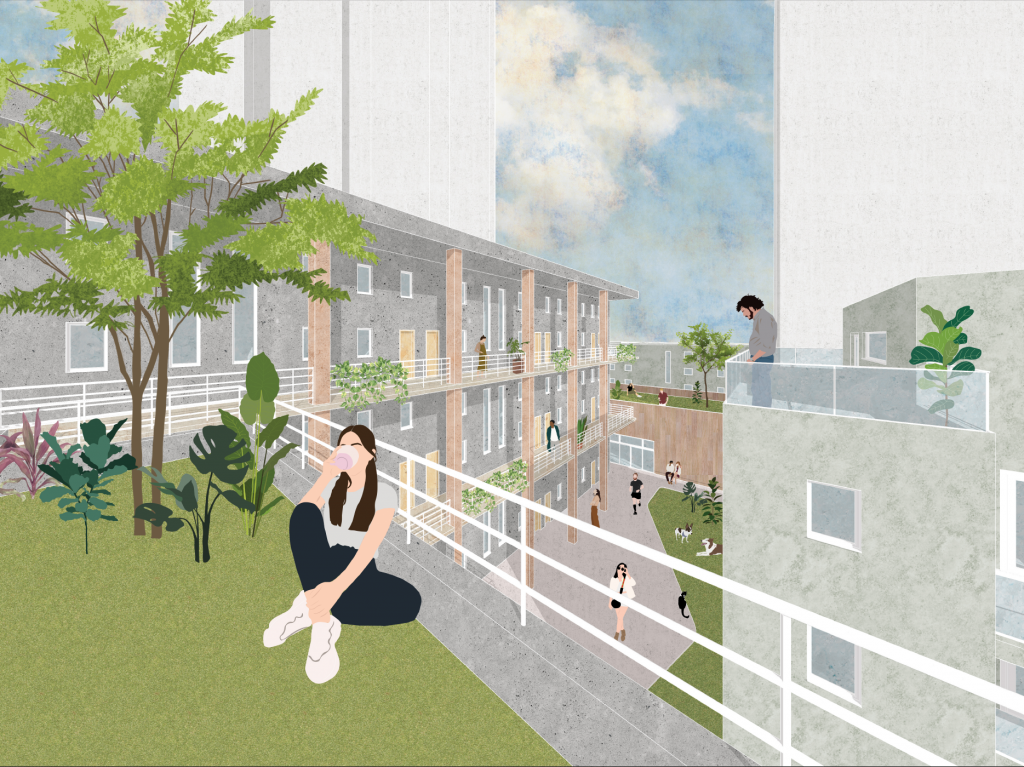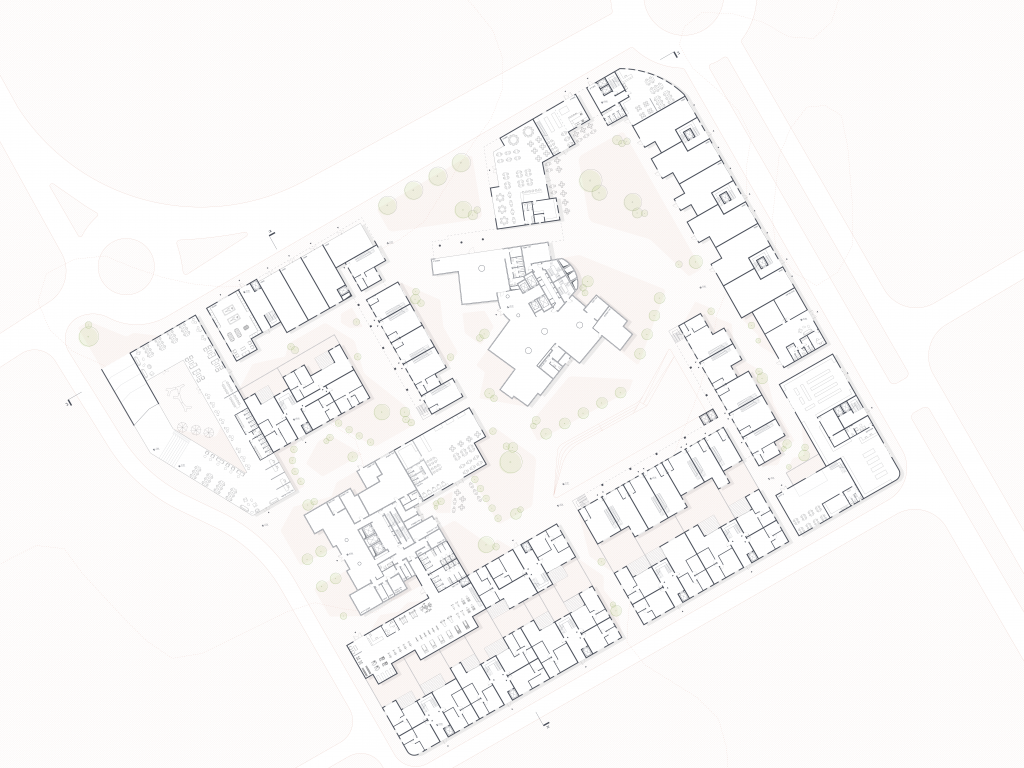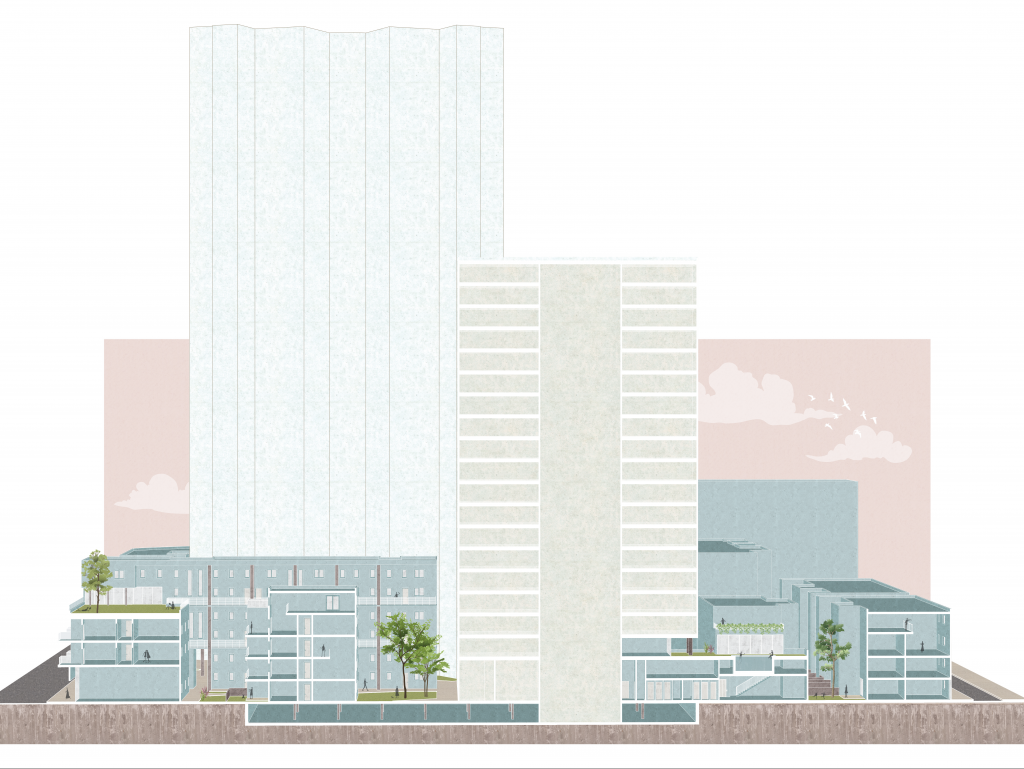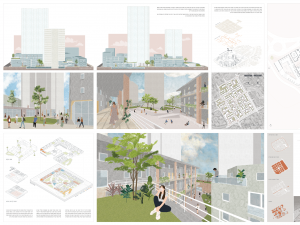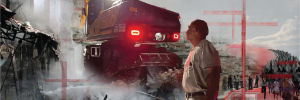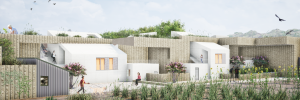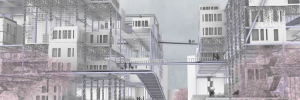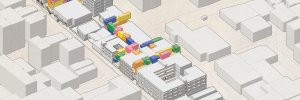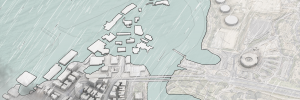Between a City
The phenomenon of urban loneliness has been gaining momentum, especially in recent decades. Population growth alongside the increasing transition to cities brings with it the need to densify the existing areas in the city and increase building heights in order to satisfy the demand for housing. The result is duplicated and unidentified residential projects, which constitute a kind of “bubble” detached from the urban fabric, with the building itself compounding this problem as there is almost no interaction between its users. This way of life, under the auspices of the city’s residential towers, creates a lack of interaction between residents of the same building or neighborhood, and hence leads to weak social relationships that make it difficult to form a community within the city. The project seeks to answer the question of how architecture can design the evolving urban space so that a community is created and maintained in a neighborhood setting. The project also offers a solution that lies between the city’s new residential projects, which are being built to meet the city’s need for as many housing units as possible, and its low and dense mixed-use buildings. The Ir-Yamim neighborhood in Netanya was chosen as the intervention area. This neighborhood favors grid-based planning of autonomous units, produces a standard of monumental luxury living that distinctly screens the population, and prefers functionality over street and urban experience. However, the city has tremendous potential for redesign thanks mainly to the abundance of open spaces and unused land between the buildings. Thus, combining new construction in dense blocks with the existing adjacent towers, alongside mixed use and the integral inclusion of public-cooperative functions with housing, will increase interaction between residents while also creating significant social connections and a sense of community.



